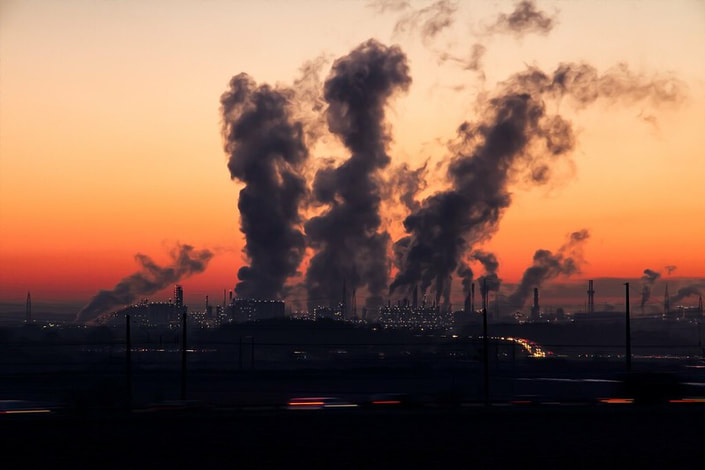|
By Alice Sardarian
Anthropogenic pollutants constantly seep into the environmental elements around us. The water we drink, the earth we cultivate, and the air we breathe, are all contaminated with health-damaging toxins. Pollution leads to the deaths of millions of people each year by propagating and spreading disease. Smog is a type of air pollution, originally labeled for its mixture of smoke and fog and causing over 3 million deaths per year, as reported by the World Health Organization. Most of these deaths occur in South Asia and China, where around 1 million lives are lost to air pollution each year. With its deadly effects, air pollution has been deemed the greatest environmental health risk today. Air pollution increases risk of stroke, cardiovascular disease, asthma, bronchitis, and lung cancer. Some pollutants include black carbon, nitrogen dioxide, sulfur dioxide, lead, and other particulates. Black carbon is a sooty byproduct emitted from burning fossil fuels. It not only causes disease, but also spreads and covers the polar ice caps of Earth. The ice caps fail to reflect sunlight and contribute to the Earth’s increasing temperatures. The smog in China has become so dense and suffocating that individuals have resorted to purchasing packaged air. “Clean air is actually a very rare commodity,” says Leo de Watts, the founder of AETHEAR, a British company that sells bottled fresh air from Wales. Products from this obscure market include air from as far as Australia’s Bondi beach and the Canadian Rocky Mountains, both of which sell for as much as $97 per bottle in China. Besides their apparent impracticality, these bottles of air do not address the roots of pollution, nor do they provide enough air to sustain breathing; one person would need eight to ten bottles a minute to survive on bottled air. When bottled air is the only way to breathe unpolluted air, breathing fresh air becomes a privilege for the wealthy. All individuals within an environment are exposed to its elements and air pollution does not discriminate against socioeconomic background, age, or gender. Those most vulnerable to the destructive actions of pollutants are the very young and the elderly. Children’s immune systems are just developing and their lungs are still growing. Due to their small size and elevated respiratory rates, children intake more toxins than adults relative to body size. According to a recent report by the United Nations Children’s Fund (UNICEF), inhalation of these toxins is detrimental to children’s bodies and may damage brain development.The report notes that “every neural connection made during...brain development in early childhood forms the foundation for future neural connections, and ultimately influences the likelihood of healthy development of a child’s brain,” and their resulting success, or lack thereof, in life. There are specific physiological mechanisms of pollutants that primarily affect young children. For example, pollutants easily disrupt children’s blood-brain barriers; small pollutant particles less than 2.5 microns wide (2.5 millionths of a meter—half the size of a human red blood cell) can sneak past this intentionally unsurpassable barrier and can cause inflammation in children, which has also been linked to the development of dementia in later years. Magnetite, another small particulate, can enter through the nerve used for smell reception and disrupt the brain with its magnetic charge. Other pollutants can degrade the white matter in the brain, which is critical for the formulation of neural connections in a child’s early life. 17 million children under the age of one are at risk of developing autism and ADD, earning lower academic grades, and suffering reduced IQs, due to early exposure to air pollutants above the World Health Organization’s recommended air pollution limit of 10µg/m^3. A study conducted by the Columbia Center for Children's Environmental Health notes that even prenatal exposure to polycyclic aromatic hydrocarbon, a common urban New York pollutant, significantly reduces mental development measured at age three. The presence of caustic, toxic pollutants in the air eliminates opportunities for a healthy start in younger generations. In the United States, 38,000 total deaths per year are attributed to air pollution. In order to safeguard our future, and to reduce the irreversible health damage incurred by populations, efforts must be made to reduce fossil fuel consumption and to lead cleaner lives. Especially in the wake of recent forest fires and other environmental disruptions, it is critical to preserve our clean air—without denying the issue at hand and resorting to imported bottles of mountain air. Alice Sardarian is a freshman at Barnard College studying Physiology & Organismal Biology in addition to premedical coursework. She is an editor for the Columbia Science Review.
0 Comments
Leave a Reply. |
Categories
All
Archives
April 2024
|

